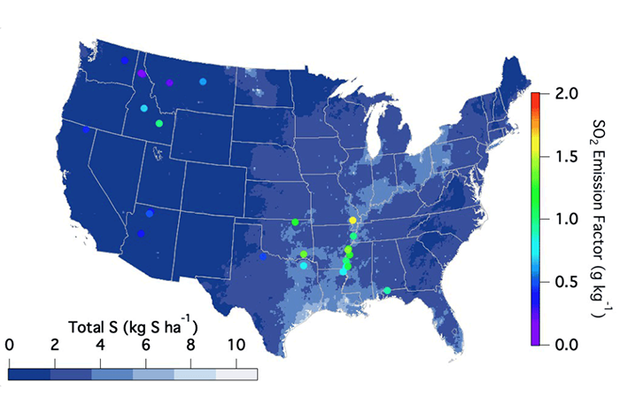Quantifying sulfur dioxide emissions and understanding air quality impacts from wildfires

National Atmospheric Deposition Program (2022) reported sulfur deposition rates. Credit: doi:10.5194/acp-22-15603-2022

National Atmospheric Deposition Program (2022) reported sulfur deposition rates. Credit: doi:10.5194/acp-22-15603-2022
Smoke plumes from wildfires and other biomass burning like prescribed agricultural burns add sulfur dioxide (SO2) to the atmosphere, which can transform into secondary pollutants and affect air quality, human health, and climate. The primary source of SO2 in the past has been fossil fuel combustion and industrial activities, but wildfires are expected to occur more frequently and with longer durations due to land use changes and climate change. Smoke from burning biomass influences air quality in the immediate area but research has shown that pollutants in the plumes can drift thousands of kilometers away. So it is important to fully understand the atmospheric chemistry that enables this pollution.
A new study, partially supported by the Climate Program Office’s Atmospheric Chemistry, Carbon Cycle and Climate (AC4) Program, set out to find exactly how much SO2 is emitted from fire activity, using observations from the FIREX-AQ field campaign, a joint NASA–NOAA field mission to study multiple aspects of fire emissions, chemistry, and their impacts.
Read more at the link below.